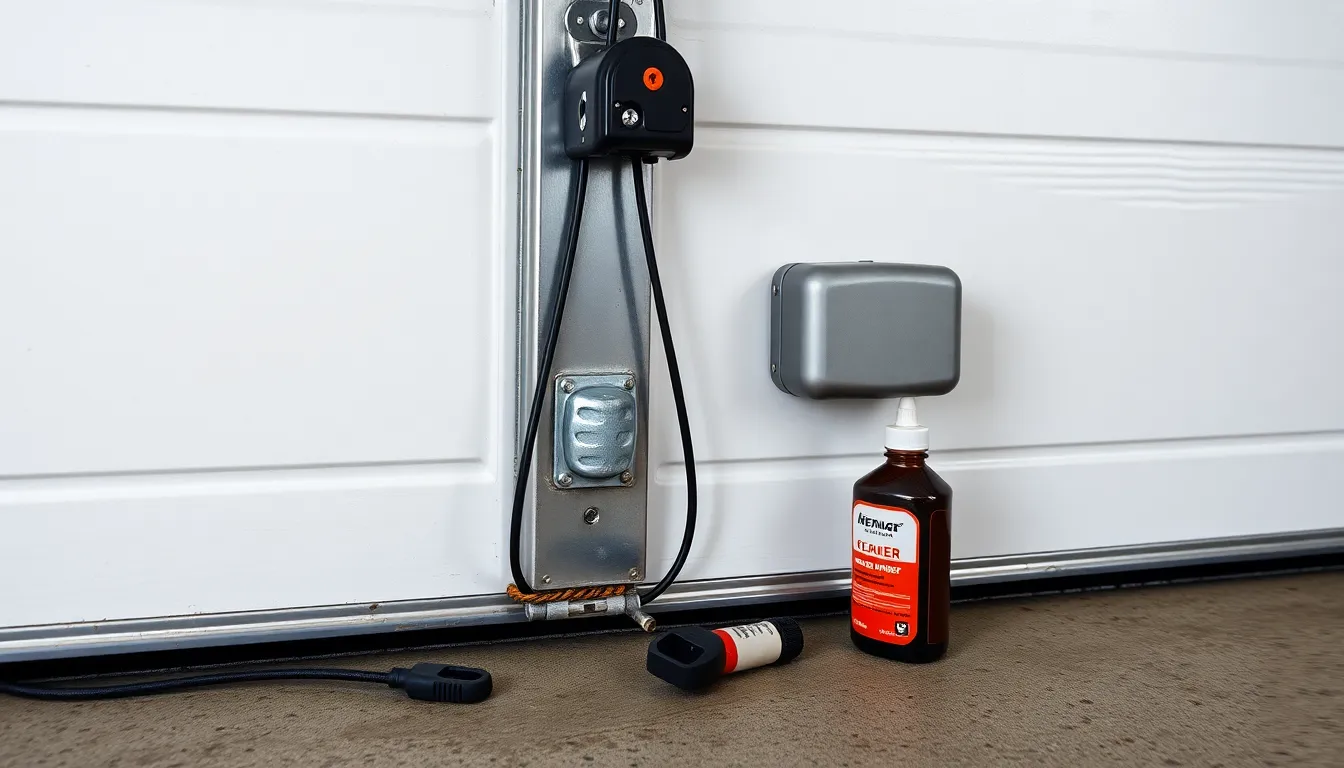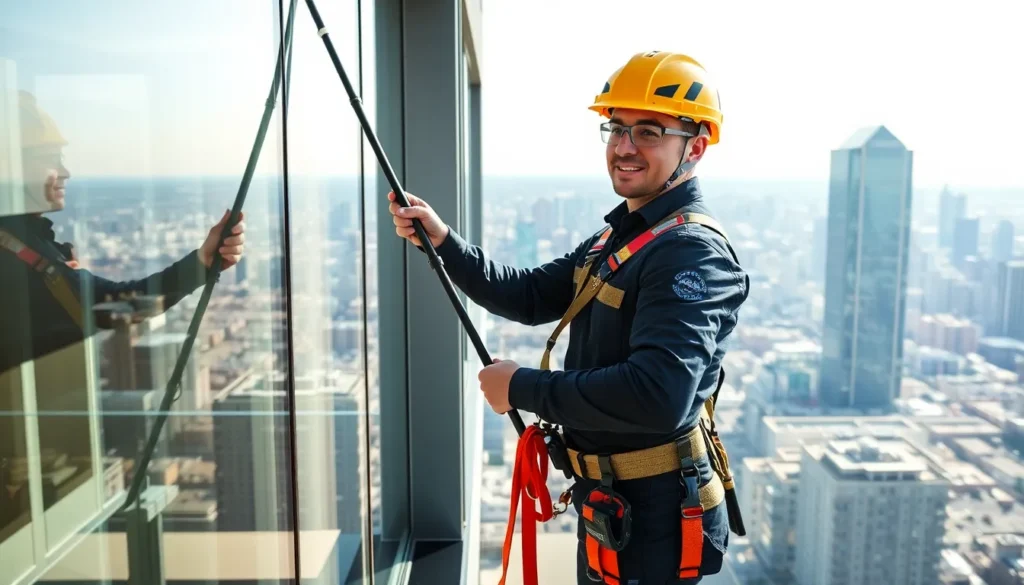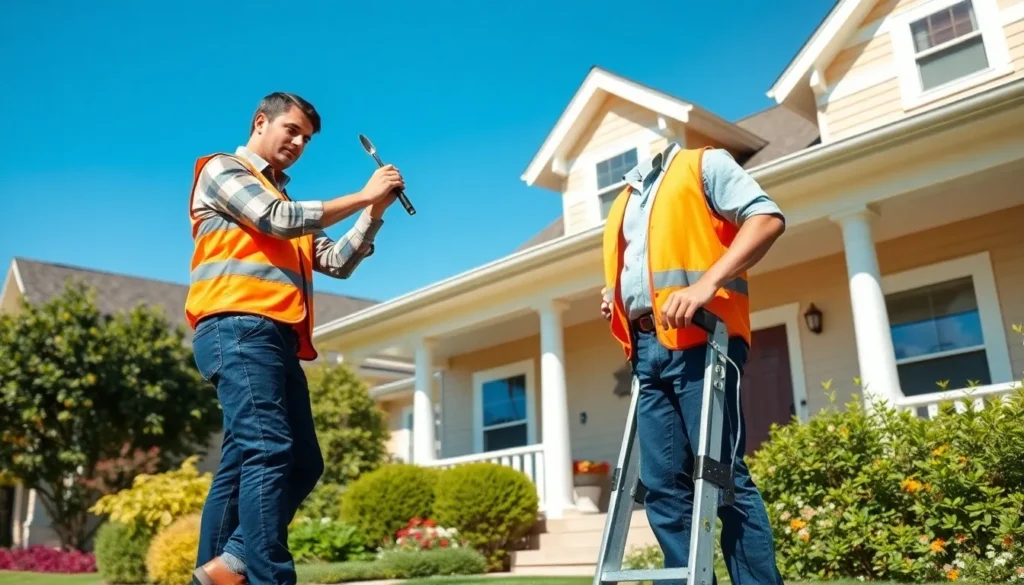A garage door is more than just an entry point; it’s a vital part of home security and convenience. However, there are times when it may become disengaged from its automatic opener, leaving homeowners puzzled and frustrated. Understanding how to reengage a garage door can save time and prevent unnecessary stress.
Reengaging the garage door isn’t as daunting as it seems. With a few simple steps, anyone can restore functionality to their door, ensuring it operates smoothly once again. Whether it’s due to a power outage or a malfunctioning remote, knowing how to tackle this issue empowers homeowners to take control of their space. In this guide, you’ll discover effective methods to quickly and safely reengage your garage door, making it hassle-free to get back to your daily routine.
Table of Contents
ToggleUnderstanding The Garage Door Mechanism
Garage doors play a crucial role in securing property and providing convenience. Knowledge of their mechanisms enhances the ability to troubleshoot issues effectively.
Types Of Garage Doors
- Sectional Garage Doors
Sectional garage doors consist of panel sections that move along tracks. These doors open vertically and are common in residential settings for their space-saving design.
- Roll-Up Garage Doors
Roll-up garage doors are made of multiple slats that coil into a drum. Their compact design suits businesses with limited overhead space.
- Tilt-Up Garage Doors
Tilt-up garage doors lift up and tilt out toward the front. These doors require ample space outside and are simpler in design compared to sectional variants.
- Slide-To-The-Side Garage Doors
Slide-to-the-side doors operate horizontally and slide along the wall. These types usually occupy less vertical space and suit narrower openings.
Components Involved In Reengagement
- Garage Door Opener
The garage door opener controls the door’s operation. It can be chain-driven, belt-driven, or screw-driven, influencing efficiency and noise levels.
- Safety Sensors
Safety sensors detect obstacles in the door’s path. They prevent the door from closing if an object or person is detected, ensuring safety during operation.
- Trolley Assembly
The trolley connects the door to the opener. It slides along the rail, enabling the door to open and close properly.
- Release Mechanism
The release mechanism allows manual operation of the door. Engaging this system when a power outage occurs is vital for reengagement.
- Track System
The track guides the door’s movement. Proper alignment ensures smooth operation and may require lubrication for optimal performance.
Each component plays a significant role in the functioning of garage doors, and understanding these parts will aid in troubleshooting or reengaging the door effectively.
Common Reasons For Disengagement

Garage doors can become disengaged for several reasons. Understanding these can help homeowners identify and address the issue.
Manual Disengagement
Manual disengagement occurs when the garage door opener is deliberately disconnected from the door. Homeowners might do this during power outages to open the door manually or for routine maintenance. Using the release mechanism, they pull the cord to separate the door from the opener. If the door remains disengaged after manual operation, the release mechanism might need to be reset to reconnect it.
Mechanical Issues
Mechanical issues often lead to garage door disengagement. Problems may arise from a misaligned track or debris obstructing the movement. If the rollers are worn or damaged, they can hinder the door’s operation and cause disengagement. Additionally, a malfunctioning opener or faulty safety sensors can prevent the door from engaging properly. Regular inspections can help identify and resolve these mechanical issues before they lead to disengagement.
Step-By-Step Guide On How To Reengage Garage Door
Reengaging a garage door can seem challenging, but following a systematic approach makes it manageable. Homeowners can restore functionality by taking safety precautions, gathering necessary tools, and executing detailed instructions.
Safety Precautions
- Disconnect Power: Ensure the garage door opener is unplugged to prevent accidental activation.
- Clear Area: Remove any obstructions around the garage door to facilitate movement.
- Use Protective Gear: Wear gloves and safety goggles to protect against sharp edges and debris.
- Check Stability: Confirm that the door remains stable while engaging and disengaging to avoid injury.
Tools Needed
- Step Ladder: Provides access to higher components such as the opener and trolley assembly.
- Screwdriver: Required for tightening or loosening screws in the opener or tracks.
- Wrench Set: Useful for adjusting hardware connections.
- Flashlight: Ensures visibility in dimly lit garage spaces, especially if troubleshooting is necessary.
Detailed Instructions
- Identify Release Mechanism: Locate the manual release handle, typically a red cord hanging from the trolley assembly.
- Pull Handle: Pull the release handle firmly down to disengage the door from the opener. The door should now operate manually.
- Open Door: Open the garage door fully by hand to clear any debris or obstructions from the tracks.
- Reattach Mechanism: To engage the door again, pull the manual release handle towards the opener until it clicks into place.
- Test Operation: Restore power to the opener and test the garage door’s automated function. Ensure smooth operation without obstacles.
- Adjust as Necessary: If the door fails to engage properly, check the alignment of the tracks and the visibility of safety sensors, making adjustments where needed.
By adhering to these steps, homeowners can effectively reengage their garage door, restoring convenience and safety to their daily routines.
Troubleshooting Tips
Addressing issues with a garage door requires careful identification of problems and practical solutions. Here are useful tips for troubleshooting and reengaging a disengaged garage door.
Identifying Common Problems
- Manual Disengagement: Check if the door’s release mechanism has been accidentally triggered, separating it from the opener.
- Misaligned Tracks: Inspect tracks for any bends or misalignment, which can prevent the door from moving smoothly.
- Debris Obstruction: Look for debris or objects in the garage door’s path that could block its movement.
- Worn Components: Examine rollers and cables for wear and tear, as damaged parts can hinder operation.
- Opener Malfunctions: Assess the garage door opener for mechanical failures or connectivity issues that disrupt function.
- Sensor Issues: Ensure safety sensors are clean and properly aligned to allow for operation.
Solutions To Try
- Reconnect the Release Mechanism: Pull the release cord down and reattach it securely to the carriage.
- Realign Tracks: Adjust tracks using a wrench to straighten any bends, ensuring the door moves freely along the path.
- Clear the Area: Remove any obstructions or debris in the door’s path to prevent interference.
- Replace Worn Parts: Install new rollers or cables if they show signs of damage, ensuring smooth operation.
- Troubleshoot the Opener: Reset the opener by unplugging it and plugging it back in, then reprogram the remote if necessary.
- Clean Sensors: Wipe down the safety sensors with a soft cloth, ensuring they remain unobstructed and aligned.
Reengaging a garage door doesn’t have to be a daunting task. With the right knowledge and tools homeowners can quickly restore the functionality of their garage doors. Understanding the mechanics and common issues that lead to disengagement empowers them to troubleshoot effectively.
Regular maintenance and inspections play a crucial role in preventing future problems. By staying proactive and following the provided steps homeowners can ensure their garage doors operate smoothly and securely. This not only enhances convenience but also reinforces the overall safety of their homes.









